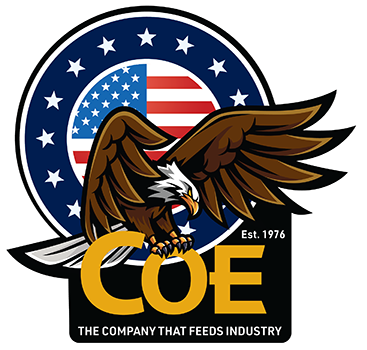

Since 1976, COE has been providing North American stampers, fabricators, and manufacturers with best-in-class coil press feed equipment, on-site manufacturing, 24/7 support, and unparalleled service.
Whether you need an individual roll feed, straightener, reel, or a completely integrated coil press feed line or cut-to-length line, each job COE Press Equipment delivers is engineered for your needs and backed up by our quality services. Whether you are performing light gauge stamping, non-ferrous processing or need heavy-duty feed capability for processing AHSS, we have the material feeding equipment for your needs.
With an install base of thousands of machines and satisfied customers, we have a well-earned reputation for delivering equipment with proven performance. Improve your operations and simplify your life by partnering with COE Press Equipment. We deliver what you need.
As an equipment manufacturer for the metal stamping industry with an install base of thousands of machines and satisfied customers, we have a well-earned reputation for delivering equipment with proven performance.
Founded in 1976 in Rochester, Michigan, COE quickly grew from manufacturing air feeds and coil cradles to include coil reels and power straighteners. Operations were moved to Sterling Heights in 1980 and then, in 1982, COE introduced its first servo feed, launching the company into its own line of industry-leading servo feed controls and customized packages. COE was also the first servo feed manufacturer to develop a single-point entry interface as well as the first to develop and market a servo feed driven by a non-stretch Kevlar timing belt and low inertia aluminum pulleys. In 1999, the company purchased certain assets and product designs from Sesco, Inc. Now COE is a worldwide premier coil feed press and metal stamping equipment manufacturer, offering the heaviest and widest coil feeding equipment available to the metal stamping industry.
